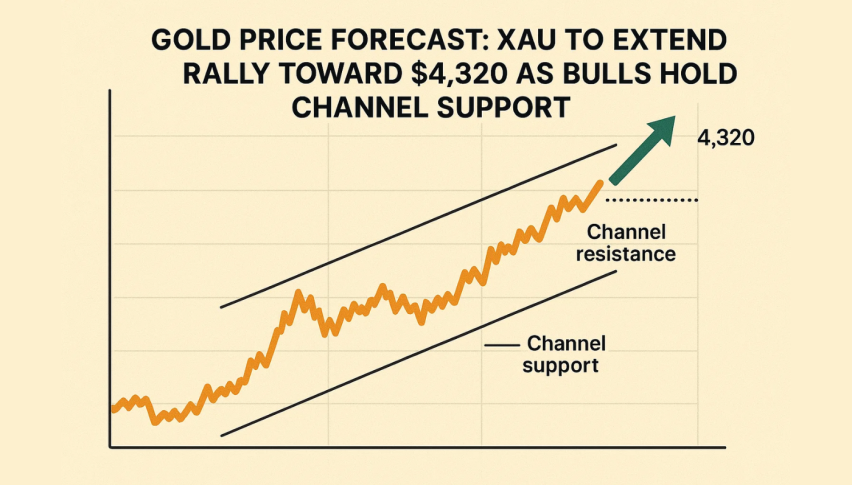Gold Prices Signal Reversal as Fed Rate Cut Nears, $3850 Target in Sight
The precious metal paused this week as investors booked profits amid weak global trends.

Quick overview
- Gold prices experienced a significant decline this week after reaching a record high of $4,398 per ounce, falling by 6.11 percent to an intraday low of $4,093.
- The market's downturn was influenced by weak demand during the festive season and profit-taking by investors amid a lack of new catalysts.
- Spot Gold ended a nine-week winning streak at $4,114.12, suggesting a potential multi-week correction if selling pressure continues.
- Despite lower-than-expected U.S. inflation data and expectations for a Federal Reserve rate cut, gold struggled to rebound as broader market optimism increased.
The precious metal paused this week as investors booked profits amid weak global trends. Sentiment was also affected by weak demand during the festive season. On Monday, Comex gold hit a record high of $4,398 per ounce in global markets. However, the metal fell by USD 266.4, or 6.11 percent, to an intraday low of $4,093 per ounce on Tuesday, marking its largest one-day decline in over ten years.

Downside targets become clear if sellers follow through this week, though the closing price reversal top is not yet confirmed. There may be a correction that lasts two to three weeks, with $38450 as the next likely target.
Spot Gold (XAUUSD) ended a nine-week winning streak at $4114.12, down $139.85 or 3.29 percent. Early in the week, the market reached a new all-time high of $4381 but closed lower, forming a weekly reversal top. It suggests a shift in momentum and raises the likelihood of a multi-week correction if supported by follow-through selling this week, while this pattern alone does not signal a trend change.
Fed rate cut expectations and global central bank demand fueled the dramatic rise. Traders took profits as sentiment became stretched, and no new catalysts emerged to push prices higher. Gold now faces a potential pullback not because the trend has ended, but because, without buyer intervention, the technical structure might be beginning to shift.
The U.S inflation report released on Friday was lower than anticipated. The idea that the Federal Reserve will lower rates by 25 basis points at its October 28–29 meeting is supported by the Core CPI, which increased by just 0.2 percent month-over-month and 3.0 percent annually.
The markets are still inclined toward a second cut in December, which would reduce the fed funds range to 3.75–4.00 percent. Gold was unable to rebound in spite of the dovish data. As stocks surged due to mild inflation and optimism surrounding US-China trade negotiations, broader risk appetite increased. The dollar slightly increased, and Treasury yields increased early in the week, both of which added to the pressure on gold’s decline. The incapacity to maintain weekly gains indicates that buyers are currently holding out for a return to deeper value zones.
- Check out our free forex signals
- Follow the top economic events on FX Leaders economic calendar
- Trade better, discover more Forex Trading Strategies
- Open a FREE Trading Account


